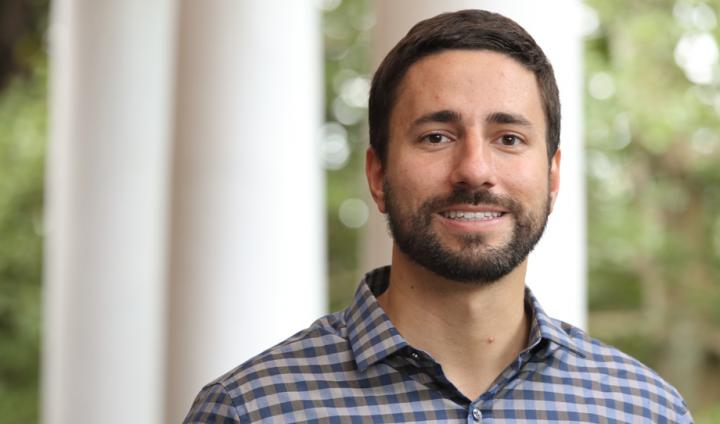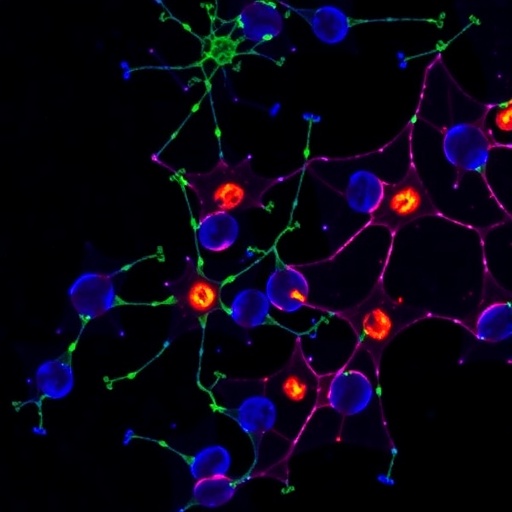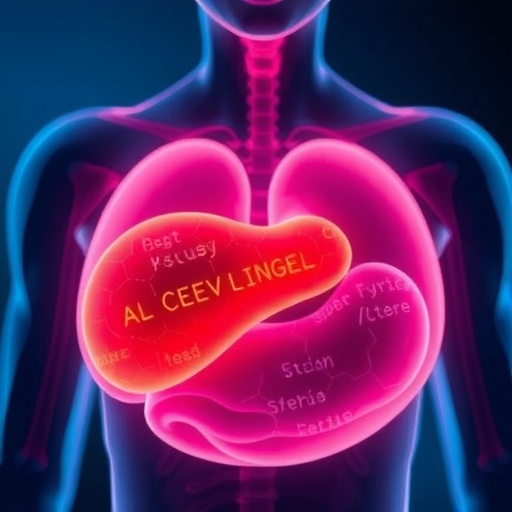NSF grant funds study of fibrosis progression using hydrogels engineered to mimic living tissue
Fibrosis, the stiffening of normally soft or pliant living tissue, contributes significantly to about 40% of the overall deaths in the developed world.
“Yeah, it’s a hell of a stat,” Steven Caliari, an assistant professor of chemical engineering and biomedical engineering at the University of Virginia School of Engineering, said. “But that’s because fibrosis, or chronic scarring, itself isn’t a disease, it’s an outcome of many different diseases.”
The list includes some cancers, viral infections such as hepatitis, and idiopathic pulmonary fibrosis, a cruel condition in which scar tissue grows in the lungs, restricting the flow of oxygen. “Idiopathic” means the disease has no known cause. It has no cure, either.
Researchers like Caliari believe stopping or even reversing the progression of fibrosis is possible, but they need to know a lot more about what is happening in the body to make cells go from normal to a diseased state. Caliari has received a coveted National Science CAREER Award totaling $579,143 to use biomaterials developed in his lab to open a window on that process.
The NSF grant is Caliari’s second prestigious grant for early-career faculty in recent months. In fall 2020, he landed a $1.8 million Maximizing Investigators’ Research Award for Early-Stage Investigators from the National Institute of General Medical Sciences, one of the National Institutes of Health. He also recently was named a 2021 Young Innovator in Cellular and Molecular Bioengineering.
“Since joining UVA Engineering in 2016, Steven has attracted a talented group of graduate and undergraduate students into his lab,” William Epling, professor and chair of the Department of Chemical Engineering, said. “They’ve built a unique cell culture system that’s really exciting for how quickly they can make these highly customizable biomaterials. It opens so many possibilities for the kind of fundamental scientific inquiry that leads to treatment breakthroughs for people who need them.”
A nice thing about Caliari’s systematic approach is that it leads to collaboration. Caliari’s lab is part of the UVA Fibrosis Initiative with his faculty mentor, biomedical engineering professor Thomas Barker. Caliari has partnered with Barker and other UVA colleagues on several projects, including the Fibrosis Initiative which brings together researchers with diverse expertise in the global fight to diagnose and treat fibrosis.
“Being co-located with a top-ranked medical school, where we can make the most of the intersection of engineering and medicine, we’ve worked hard to position UVA as a leader in fibrosis research,” Barker said. “Steven has quickly distinguished himself as an innovator, leader and team player.”
Caliari was first attracted to tissue engineering by its sci-fi appeal. While he was a chemical engineering major at the University of Florida, he interned at a company making orthopedic implants from cadaver tissue. He completed his Master of Science and Ph.D. degrees at the University of Illinois at Urbana-Champaign. Training at his next stop, a National Institutes of Health postdoctoral appointment at the University of Pennsylvania, became the genesis of his research program at UVA.
Fibroblasts are the cells that form extracellular matrices, the supportive structures for many tissues and organs – and they are the cells that go awry in fibrosis. Studying fibroblasts in living organisms, or in vivo, is challenging, because it is difficult to get a clear view of the fibroblasts’ behavior and activities.
To get a clearer view, researchers synthesize 3D hydrogels – translucent, Jello-like materials made of water-swollen polymers – designed to behave like living tissue. They place fibroblast cells on or in the material and, in a controlled way, introduce various physical cues, such as stiffening or the presence of a protein, that would occur in real tissue.
“We’re building hydrogels that capture those dynamic changes and mechanical properties at different stages,” Jenna Sumey, a Ph.D. student working in Caliari’s lab, said. “We make materials that model the native healthy tissue environment and see how cells respond to them.
“Then, we can trigger our hydrogels to stiffen at desired time points as a way to mimic the progression of a diseased environment. From here, we can study how cells respond to these changes, and this helps us learn about how that gradual activation process happens,” said Sumey, whose work focuses on pulmonary fibrosis.
“Pulmonary fibrosis is characterized by this gradual tissue-stiffening process,” she said. “There are two FDA-approved drugs, but because there is no cure, it ends up with eventual organ failure. So I think it’s a really impactful research area.”
Observing these underlying cellular mechanisms might lead to better outcomes for patients. But there’s a catch. It’s hard to recreate complex biological processes in a petri dish. In the body, all kinds of cells are always going about their business. The scientific word for this is “expressing” the genes containing the codes that determine the types of cells and their functions.
Significant among the changes the team is tracking are epigenetic responses, which refer specifically to how a cell’s new environment affects what genes the cell expresses. Another way to think of gene expression is turning on, or turning off, the set of instructions that tell the cell what to do. Caliari’s lab is making novel contributions in epigenetic studies by designing viscoelastic hydrogels, meaning they have properties of solids and liquids.
“A big part of what we’re trying to do is simplify the complexity of living tissue and organs in our hydrogel models to better understand what controls cell behavior,” Caliari said. “The majority of hydrogels used for these studies are elastic, and so they leave out some of the complexity of the mechanics of actual tissues.”
With a deeper understanding of how fibrosis progresses, Caliari’s team hopes to learn how it might be reversed. A second key epigenetic process he hopes to decode is the idea of cell memory.
“The worry is, even if you’re able to get the tissue back to a normal mechanical and functional state, the cells might still be altered in some way because they remember that diseased environment,” Caliari said. “To truly resolve these types of fibrotic disorders, you might need to figure out ways to erase their memory, so the cells aren’t overly sensitive to some new insult that might cause the fibrosis to re-emerge.”
Caliari’s CAREER Award proposal also included an outreach component to optimize the impact of his work. His focus is on training future engineers and scientists in his own lab, but also drawing from diverse populations across age levels. He plans to partner with the UVA chapter of the Society of Hispanic Professional Engineers to develop teaching modules on biomaterials concepts for elementary school students. He also wants to initiate a high school summer research program involving labs in UVA’s Fibrosis Initiative.
“It’s a personal goal that’s really important to me,” Caliari said. “My mom’s a Cuban immigrant, and she’s also an educator. I come from a family of educators, so I think about ways to open the door to opportunities for students from groups traditionally underrepresented in STEM to enter and excel in these fields.”
###
About UVA Engineering: As part of the top-ranked, comprehensive University of Virginia, UVA Engineering is one of the nation’s oldest and most respected engineering schools. Our mission is to make the world a better place by creating and disseminating knowledge and by preparing future engineering leaders. Outstanding students and faculty from around the world choose UVA Engineering because of our growing and internationally recognized education and research programs. UVA is the No. 1 public engineering school in the country for the percentage of women graduates, among schools with at least 75 degree earners; the No. 1 public engineering school in the United States for the four-year graduation rate of undergraduate students; and the top public engineering school in the country for the rate of Ph.D. enrollment growth since 2015. Learn more at engineering.virginia.edu.
Media Contact
Jennifer McManamay
[email protected]
Original Source
https:/





